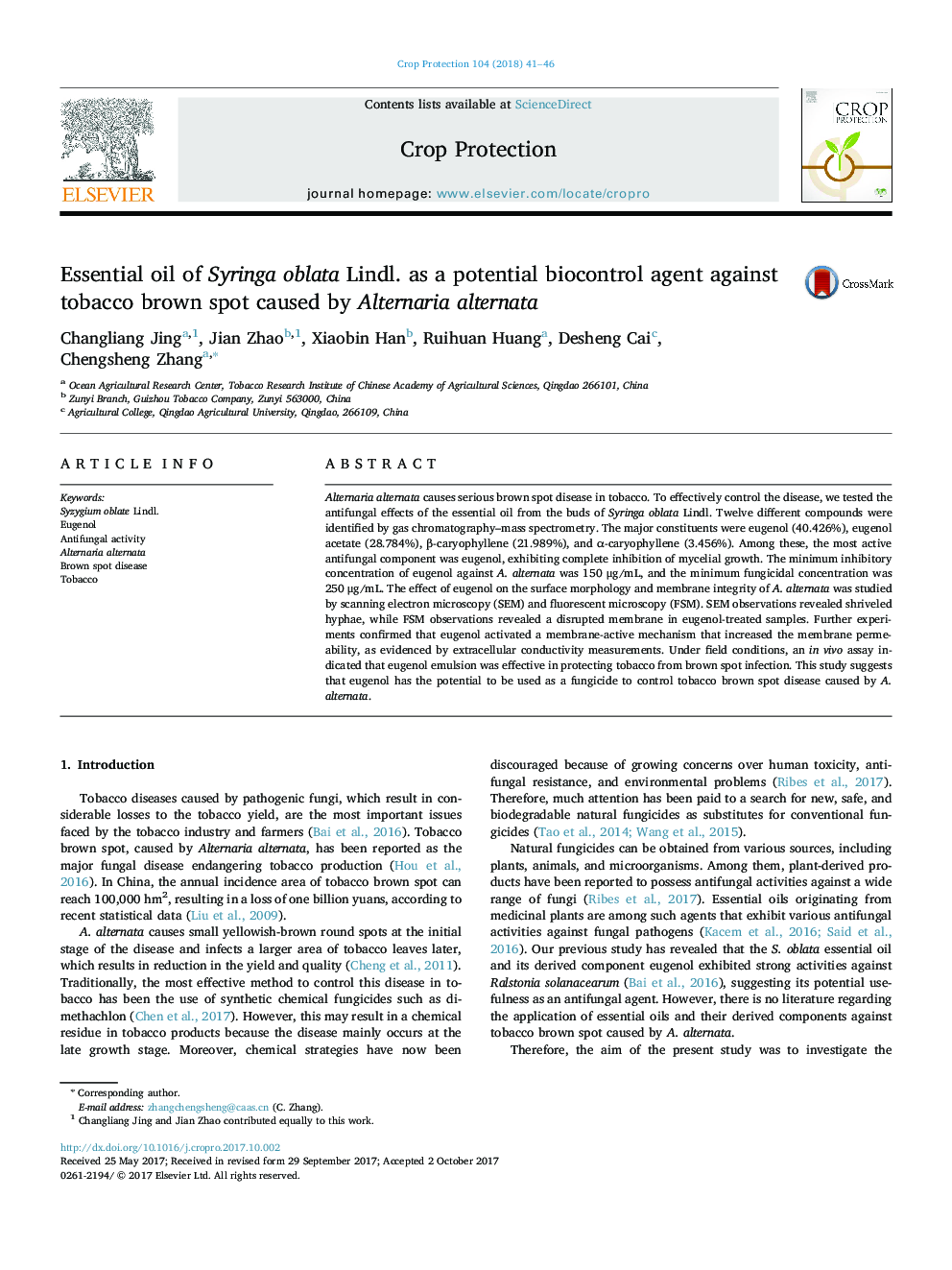| Article ID | Journal | Published Year | Pages | File Type |
|---|---|---|---|---|
| 8878309 | Crop Protection | 2018 | 6 Pages |
Abstract
Alternaria alternata causes serious brown spot disease in tobacco. To effectively control the disease, we tested the antifungal effects of the essential oil from the buds of Syringa oblata Lindl. Twelve different compounds were identified by gas chromatography-mass spectrometry. The major constituents were eugenol (40.426%), eugenol acetate (28.784%), β-caryophyllene (21.989%), and α-caryophyllene (3.456%). Among these, the most active antifungal component was eugenol, exhibiting complete inhibition of mycelial growth. The minimum inhibitory concentration of eugenol against A. alternata was 150 μg/mL, and the minimum fungicidal concentration was 250 μg/mL. The effect of eugenol on the surface morphology and membrane integrity of A. alternata was studied by scanning electron microscopy (SEM) and fluorescent microscopy (FSM). SEM observations revealed shriveled hyphae, while FSM observations revealed a disrupted membrane in eugenol-treated samples. Further experiments confirmed that eugenol activated a membrane-active mechanism that increased the membrane permeability, as evidenced by extracellular conductivity measurements. Under field conditions, an in vivo assay indicated that eugenol emulsion was effective in protecting tobacco from brown spot infection. This study suggests that eugenol has the potential to be used as a fungicide to control tobacco brown spot disease caused by A. alternata.
Related Topics
Life Sciences
Agricultural and Biological Sciences
Agronomy and Crop Science
Authors
Changliang Jing, Jian Zhao, Xiaobin Han, Ruihuan Huang, Desheng Cai, Chengsheng Zhang,
